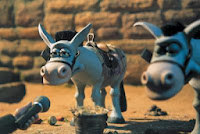The main points in a advertising plan are what does the advert want to accomplish what are its goals or its objectives? How will the advert reach these goals and what would you have to do to reach these goals and objectives plus how do you know if you have accomplished these goals and if they have worked.
 You will need a lot of knowledge of the company that you are making an advert for. You need to learn about the company background and any information that can help gain more strength in the advert. When making an advert you should think of the target audience and how it will connect with them. Will it be appealing for the target audience and will it grab their attention? In an advert you dont want to confuse the audience because they wont get the point of the advert.
You will need a lot of knowledge of the company that you are making an advert for. You need to learn about the company background and any information that can help gain more strength in the advert. When making an advert you should think of the target audience and how it will connect with them. Will it be appealing for the target audience and will it grab their attention? In an advert you dont want to confuse the audience because they wont get the point of the advert.In the making of an advert you have to be thinking would it be rememberable. This is so the advert it self would get around and more people would know and remember the advert. For example (http://www.gocompare.com/ps.aspx?Media=GG003&PST=1&device=c&gclid=CJXaj5OlqroCFS_KtAodDSgALQ) Go Compare used a character which was well known for his annoyances.

 Not just getting the audience to remember your advert you want your advert show not be too packed with information but still provides the main information in a simple way, because making an advert too over the top would over complicate it and most viewers would be lost.
Not just getting the audience to remember your advert you want your advert show not be too packed with information but still provides the main information in a simple way, because making an advert too over the top would over complicate it and most viewers would be lost. The headline of the advert should be bold and seen clearly so the audience know the company/brand. This will catch the eye of viewers so they know who the company are. Their should be more white spaces to show off the main image because too much colour appears as being too cramp in an advert.
The headline of the advert should be bold and seen clearly so the audience know the company/brand. This will catch the eye of viewers so they know who the company are. Their should be more white spaces to show off the main image because too much colour appears as being too cramp in an advert.

























